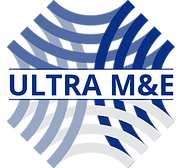Manual Handling Policy
1. General Statement
It is our policy to avoid manual handling activities which carry a risk of injury so far as is reasonably practicable. We achieve this by redesigning the task, through the use of mechanisation etc. Where this cannot be achieved we assess the risk and implement such measures as are necessary to control it to a reasonable level.
2. The Legal Position
The Manual Handling Operations Regulations 1992 apply to the physical handling of loads by employees including lifting, pushing and pulling. They place a duty on employers to:
-
avoid hazardous manual handling operations where possible
-
assess any hazardous manual handling operations that cannot be avoided
-
reduce the risk of injury, so far as is reasonably practicable.
The Regulations also require that employees must make full and proper use of any system of work provided by us.
3. Risk Assessment
Specific manual handling risk assessments are undertaken These assessments involve an initial assessment to identify tasks which are outside the HSE’s guidelines for safe lifting and, where this is the case, a detailed assessment of the risk. The assessment identifies the precautions required to reduce the risk to the lowest level reasonably practicable.
Recommendations arising from the assessments are implemented by managers and the findings of the assessments are shared with the employees involved in undertaking the work.
Manual handling assessments are reviewed at least annually or more often if there have been changes in the matters to which they relate.
Master copies of assessments are retained in the Health & Safety File for at least five years
4. Manual Handling Risk Control Measures
We have provided trolleys and pallet truck to reduce the amount of manual handling required. We ensure that two people are available where the risk assessment identifies that it is needed.
Relevant employees are trained in safe manual handling techniques and the correct use of the mechanical equipment provided.
Suitable gloves and safety footwear are provided, where appropriate. Any uniform or protective clothing has been assessed for suitability, taking into account the need for freedom of movement when carrying out manual handling tasks.
For staff who are not expected to carry out heavy lifting and are therefore not trained, we make it clear during induction training that they are not permitted to undertake this type of activity.
Line managers monitor to ensure that safe systems of work are followed.
5. Employee Responsibilities
Employees are responsible for following any instructions given and making use of the lifting equipment provided.
New and expectant mothers and others who have a health condition which puts them at increased risk of injury are not permitted to carry out manual handling activities. We also place restrictions on young workers (under the age of 18) for whom a specific risk assessment is undertaken.
Staff are instructed that they must inform their line manager if they have a health condition which increases their risk of injury.


